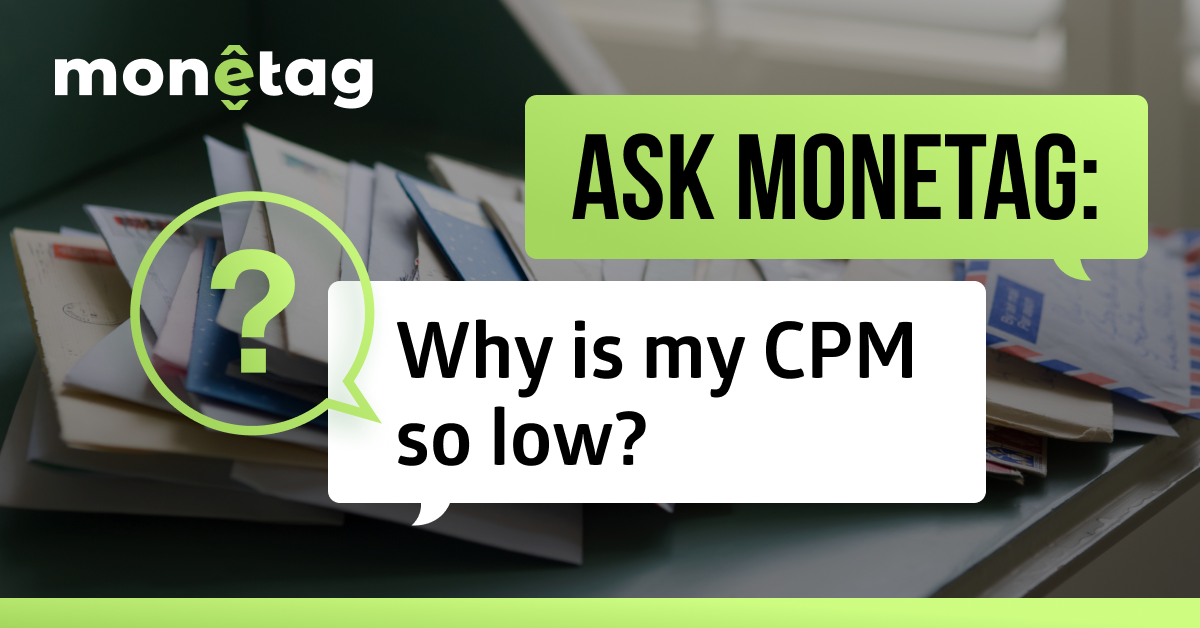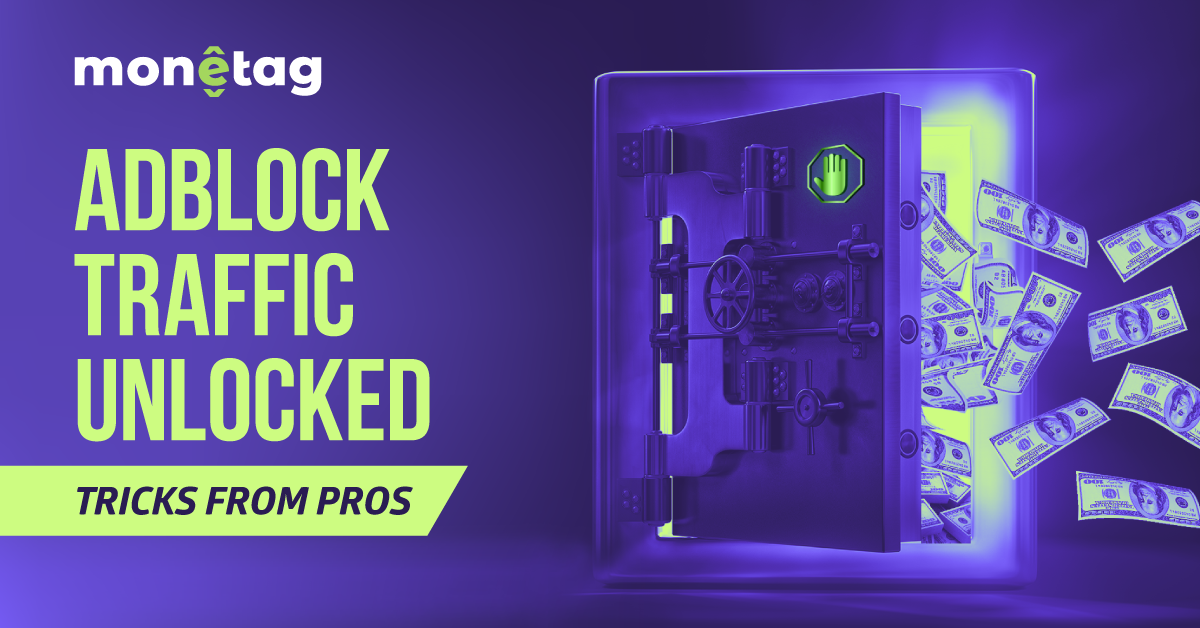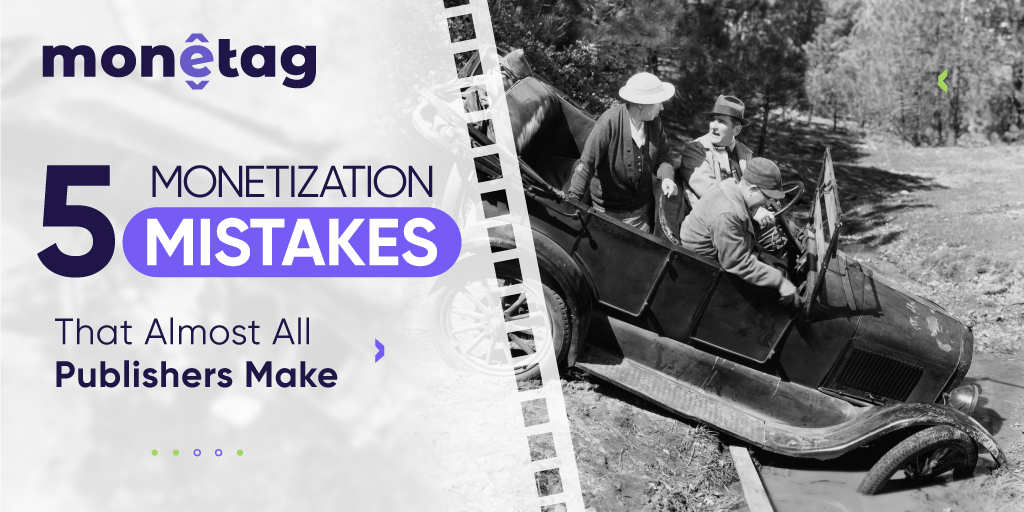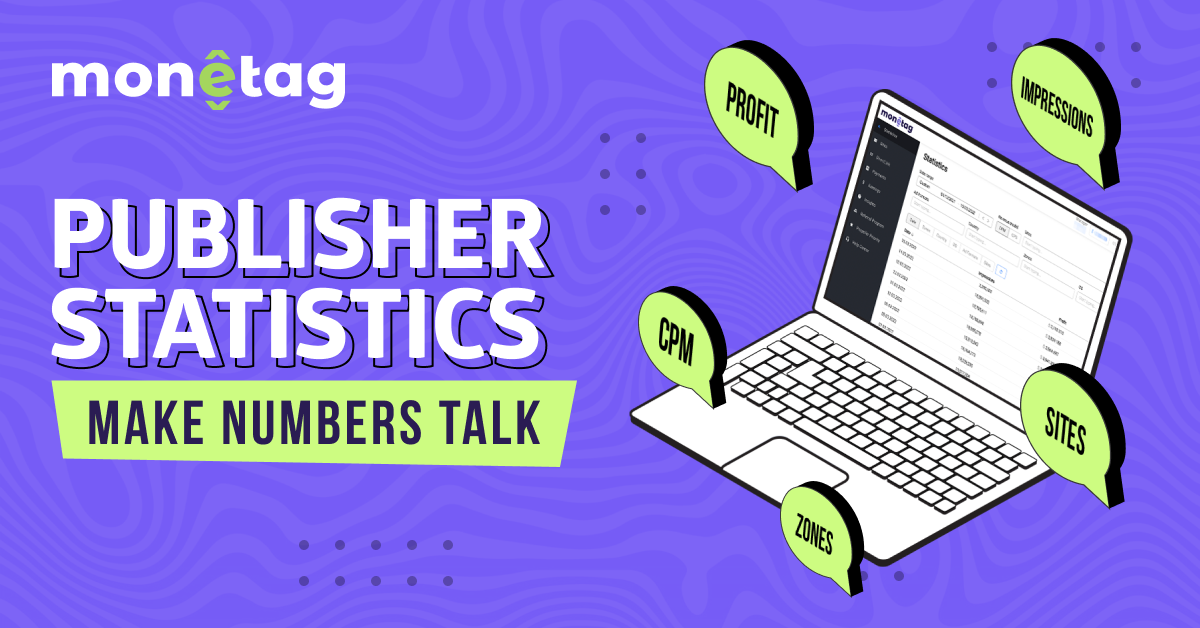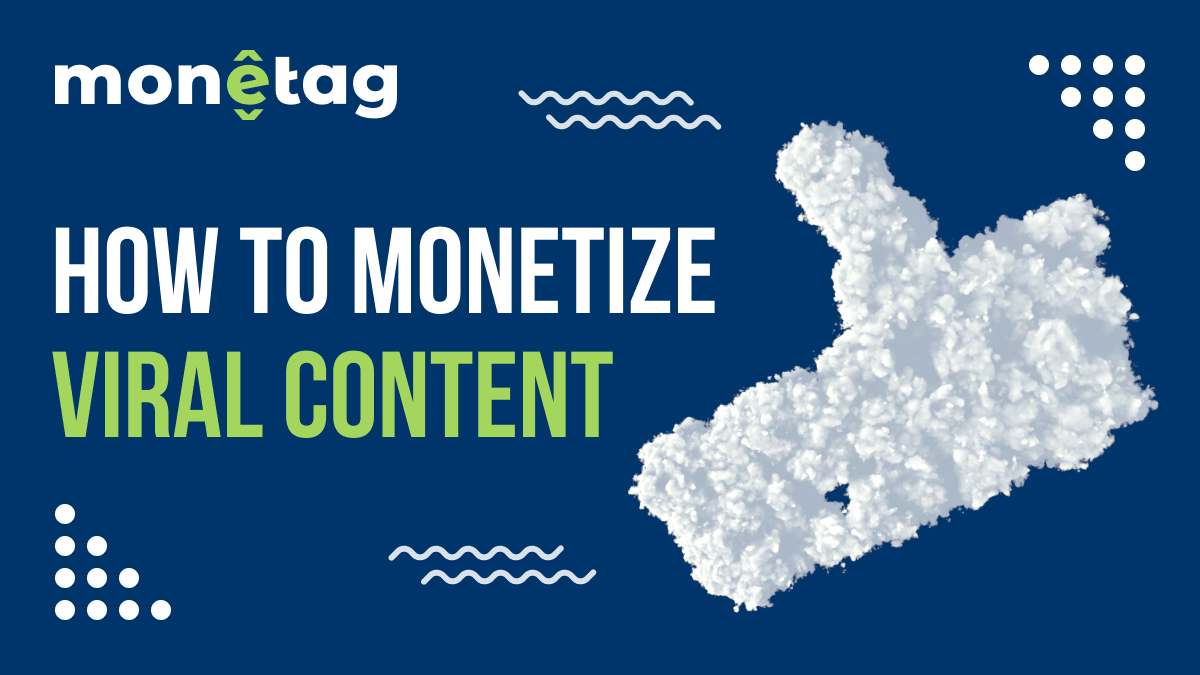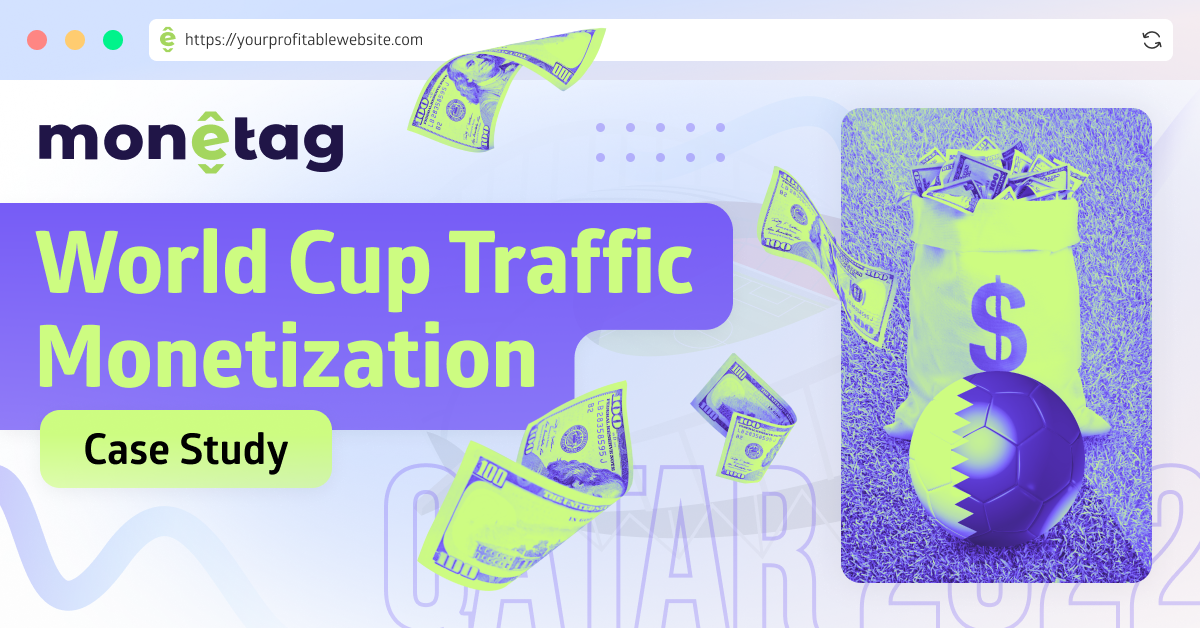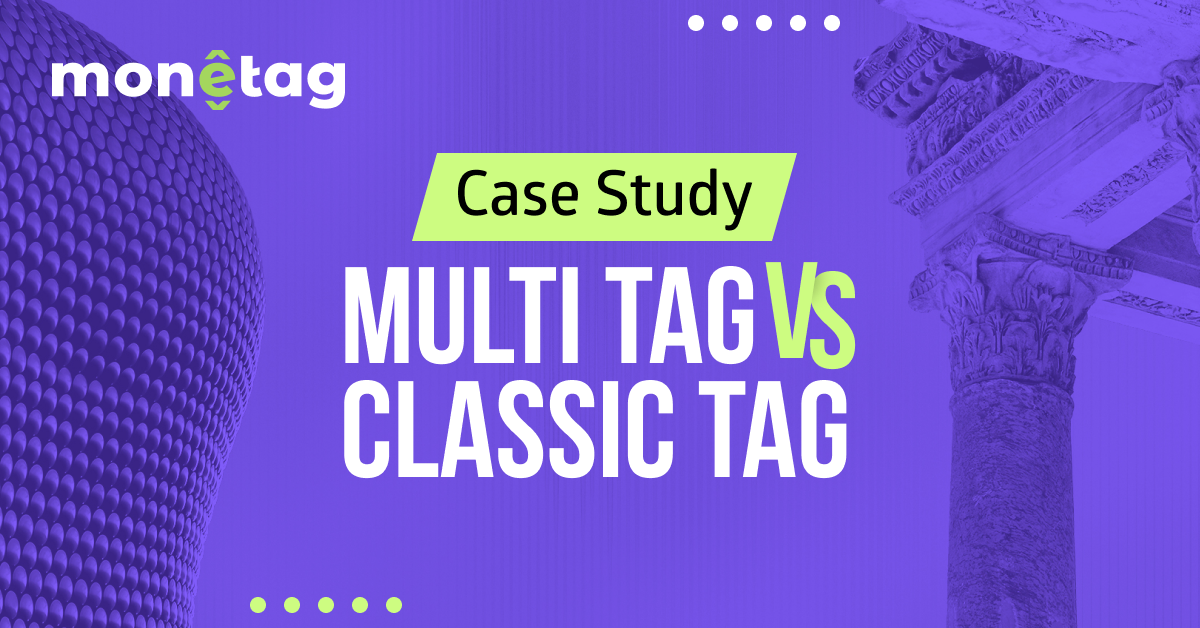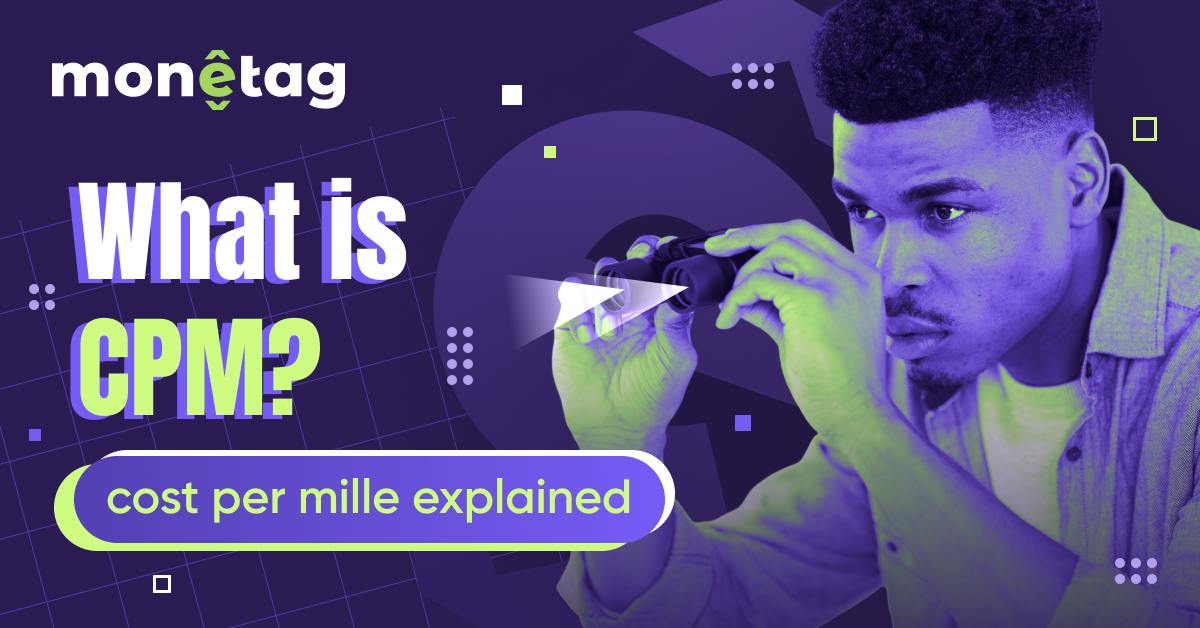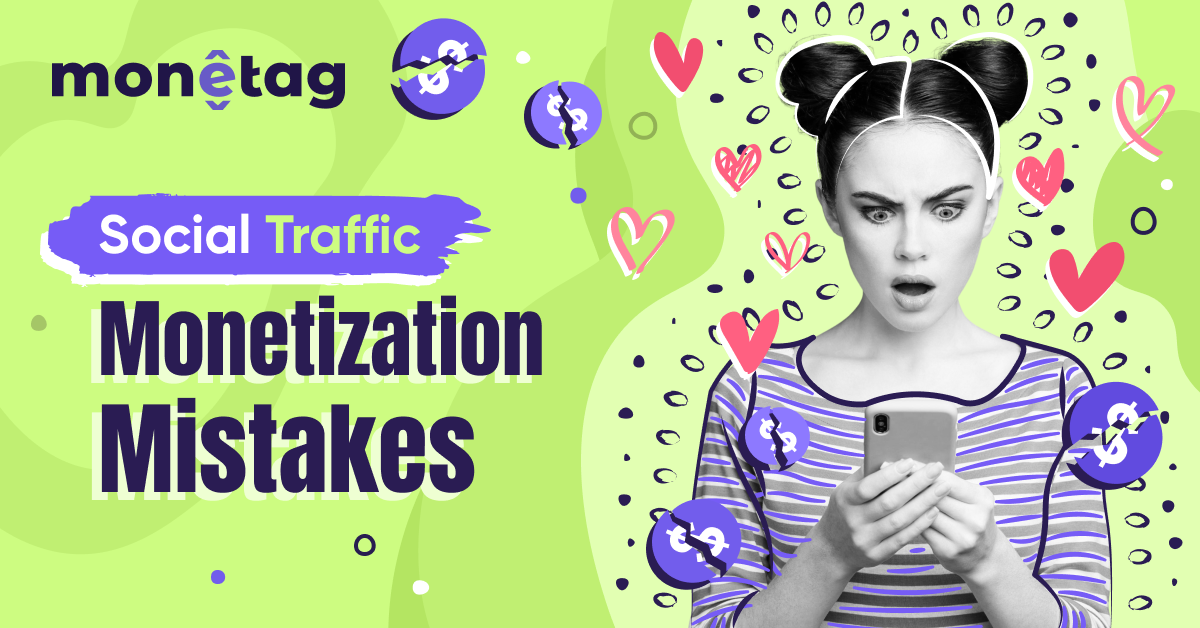Navigating CPM Fluctuations: Understanding the Causes and Finding Solutions
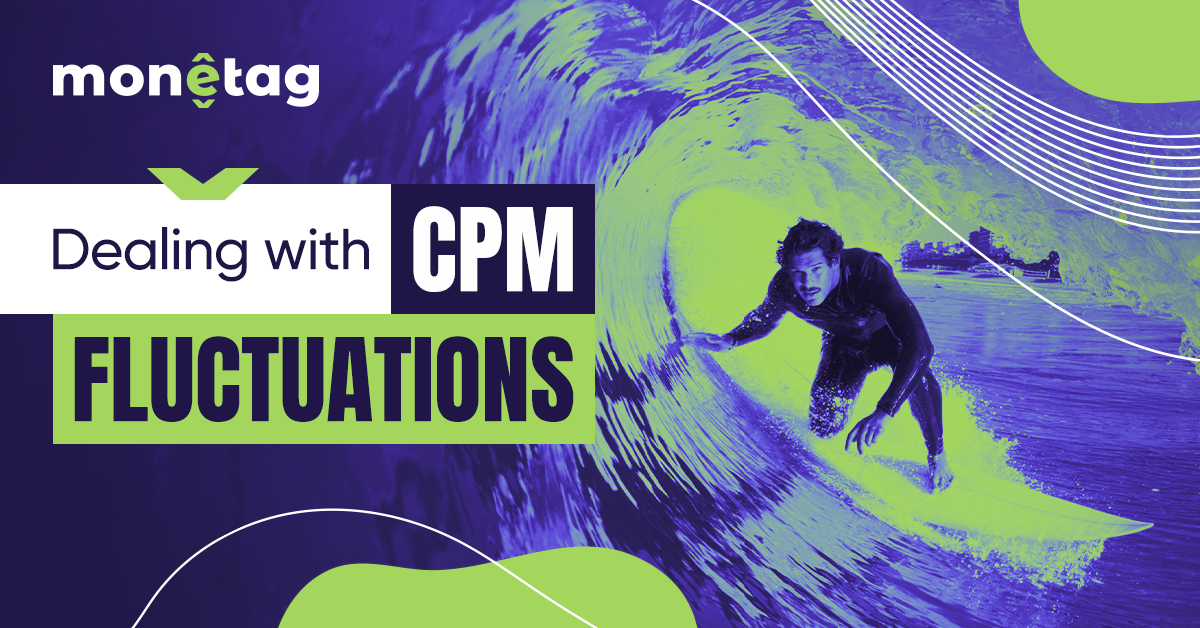
This post is also available in:
Pt
Es
Let’s face it, being a publisher is a lot of work.
But what if I told you there was a monetization model that took most of that hard work off your shoulders?
No, I’m not talking about winning the lottery or an MLM. I’m talking about CPM!
The CPM model is a clever pricing model that lets you earn money by displaying ads on your website. Sounds like a dream, right?
So sit back, relax, and let your website do the heavy lifting. Here’s everything you need to know about CPM!
What is a CPM model anyways?!
If you already know what a CPM model is, jump to the next section to dive right into the reasons why CPM rates fluctuate.
Now, let’s get down to business.
CPM stands for “Cost Per Mile”, meaning cost per every thousand.
That means that you get paid for every 1,000 views of an ad on your website. So, the more impressions you get, the more money you can make!
Now let’s take a look at why you should choose the CPM model over other models.
Why should I use the CPM model?
It’s a no-brainer, really – you get paid just for displaying ads on your website, no user engagement required.
But that’s not the only reason why you should choose the CPM model over other pricing models:
- CPM helps you judge the quality of your website traffic. If it’s good quality traffic, you’ll be rewarded with higher profits.
- CPM can improve your SEO strategy with better analytics. You can check your cabinet to see which countries, devices, and operating systems are generating the most revenue from ads, and use that intel to optimize your SEO and attract more high-paying advertisers.
Now that we’ve got that covered, let’s dive into why CPM rates can sometimes be as unpredictable as the weather!
CPM Fluctuations: 11 common reasons and fixes
Have you ever noticed that the volume of impressions you get changes as often as the wind?
Don’t panic – it’s more normal than you’d think. Think of this next section as your CPM cheat sheet – buckle up, we’re in for a wild ride!
1. You started targeting a different kind of traffic like Anti-AdBlock traffic
Are you trying to target Anti-AdBlock traffic?
Well, heads up – that might be one reason why your CPM rates have taken a dip.
Advertisers tend to pay less for this kind of traffic, which means a lower CPM for you. But don’t take it personally – it’s not because users with AdBlock are inherently disinterested in ads. In fact, these users are often as reactive as those without AdBlock.
The real issue is that there’s simply less Anti-AdBlock traffic compared to regular traffic.
However, with a little bit of patience and testing in your campaigns, it’s possible to get a high CPM by monetizing Anti-AdBlock traffic, like one of our publishers did in this example:

The data in the top table shows his CPM for regular site traffic, while the data from the bottom table shows his CPM after he monetized Anti-AdBlock traffic.
As you can see, there is a slight decline in profit, but a significant boost in CPM after targeting Anti-AdBlock traffic.
The bottom line?
Pay attention to the traffic you’re targeting and experiment with different traffic types in your campaigns.
If you notice your CPM dipping when you target a new traffic type, take it as an indication to run some tests comparing different traffic types and their results. The results will tell you which traffic drives a higher CPM and a stronger profit.
2. You’re running too many or too few ads
Let’s talk about ad overload.
If you’re running too many ads on your website, you could actually be hurting your CPM and profits.
Think about it – do you like it when you visit a website and it’s loaded with so many ads that it feels like you’re wading through a sea of spam? Probably not.
Your users feel the same way. They might ignore your ads, or worse, leave your site entirely, resulting in a low CPM.
On the flip side, if you’re not running enough ads, your users might never see them.
The solution?
It’s all about finding the right balance. Pay attention to the frequency of your ads.
If you’re consistently getting high traffic, you can afford to run more ads in shorter intervals. But if your traffic is more sporadic, it’s better to run the same ads for longer periods of time.
By striking the right balance, you can keep your users engaged and your profits high.
3. You’re displaying ads in low traffic places
Location, location, location – it’s not just important in real estate.
When it comes to ad placement, where you put your ads can have a major impact on your CPM rates.
If you’re displaying ads in low-traffic areas on your website, you’re missing out on potential revenue. That’s why it’s crucial to identify the pages and areas where you have the most visitors, and place your ads there.
How can I find high-traffic areas on my website?
One word: analytics.
You can use tools like Google Analytics to pinpoint the high-traffic pages and places on your website.
More specifically, we recommend taking advantage of Heat Maps to get a visual representation of where your users are clicking and engaging with your content.
Once you’ve gathered this information, you can optimize your ad placements to display on high traffic pages and areas on your website.
This will result in a higher CPM and increased revenue. So don’t leave your ad placement to chance – use analytics to make informed decisions and boost your earnings!
4. Life happens: unexpected global or cultural events are impacting your CPM
Let’s face it – life can throw you some curveballs.
Unexpected global or cultural events can impact your CPM rates in ways that you might not have foreseen.
Case in point: the COVID-19 pandemic.
Some publishers saw a boost in their CPM rates as more users flocked to their websites during lockdowns (i.e., news sites), while others experienced a drop due to advertisers cutting back on spending (i.e., travel verticals).

The lesson?
Sometimes, there are situations out of your control that can affect your CPM rates. But don’t worry – you don’t have to go through it alone.
If you’re struggling to navigate a sudden dip or spike in your CPM rates, take a deep breath and reach out to our Publisher Partnership Managers.
They’re here to help and support you through whatever challenges come your way.
Together, we can weather any storm!
5. You need to overcome technical SEO challenges
SEO is crucial for any successful website, but it’s not just about optimizing your meta descriptions and titles.
Technical SEO is just as important – in fact, it could make or break your CPM rates. If you’re not maintaining good technical SEO, Google could down-rank or even blacklist your site, resulting in fewer impressions and conversions.
So what do you need to keep in mind? Here are a few technical challenges to watch out for:
- Avoid Google’s Abusive Notification List by removing any malicious content and requesting a new evaluation from Google’s Search Console.
- Stay on top of Manual Actions in the Search Traffic menu of Google Search Console to avoid manual penalties.
- Keep your website loading speed fast with Google’s PageLoad Insights tool.
- Stay up-to-date with changes in Google’s algorithm by regularly reviewing your traffic and reading up on the latest Google Search news.
By tackling these technical challenges, you’ll set yourself up for success and keep your CPM rates steady.
6. Other technical challenges have cropped up
When it comes to tech challenges, there’s more than just technical SEO to worry about.
For instance, if you’re using the same advertising tag everywhere in your website code, or you’ve made changes to your ad script, you could be inadvertently hurting your CPM rates.
But don’t panic – there’s always help available. If you suspect that technical issues are causing your CPM to fluctuate, reach out to your Monetag Publisher Partnership Manager.
They’re here to help you navigate the tech jungle and emerge victorious, with higher CPM rates and greater profits. So give us a shout – we’ve got your back!
7. You need to update or change your content
When it comes to websites, content is king. After all, it’s what draws visitors to your site in the first place. But what happens when your content isn’t up to snuff?
Here are a few reasons why you might need to change or update your content:
- You suddenly switch to a completely different genre, leaving your users scratching their heads and your CPM rates plummeting.
- You outsource your content to AI tools, sacrificing quality and losing the personal touch that your users love.
- Your content is out of date, leaving your users hungry for fresh updates and causing your CPM rates to suffer.
- You experience a temporary spike in traffic from a viral post, but your CPM rates eventually settle back to their original levels.

The key takeaway? Good content is essential for any successful website. Keep it fresh, engaging, and up-to-date, and your users (and your CPM rates) will thank you!
8. Your site vertical is affected by seasons or trends
Just like the weather, some things in the online world are seasonal. And that can have a big impact on your CPM rates.
For example, media websites may see a drop in CPM during the summer, while e-commerce sites see a boost during the Christmas season.
However, there’s no need to worry – there are ways to prepare for and defend against these seasonal fluctuations.
By delivering thematic content that aligns with seasons and trends, or developing an advertising strategy that drives higher CPMs before the seasonal dip, you can help ensure your CPM rates remain strong and steady.
Need proof?
Check out this example from one of our sports publishers who doubled their performance during the UEFA European Football Championship, increasing their average monthly CPM from .61 to .65.
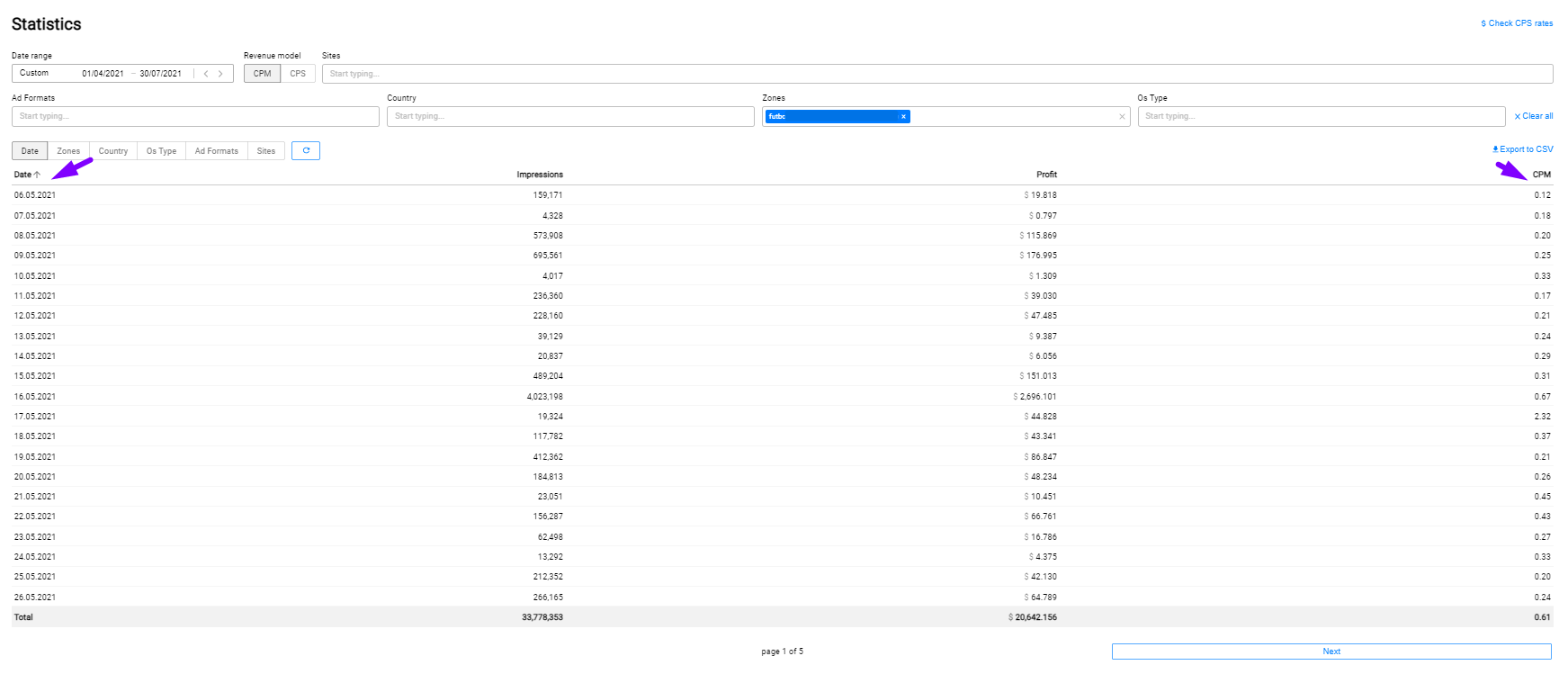
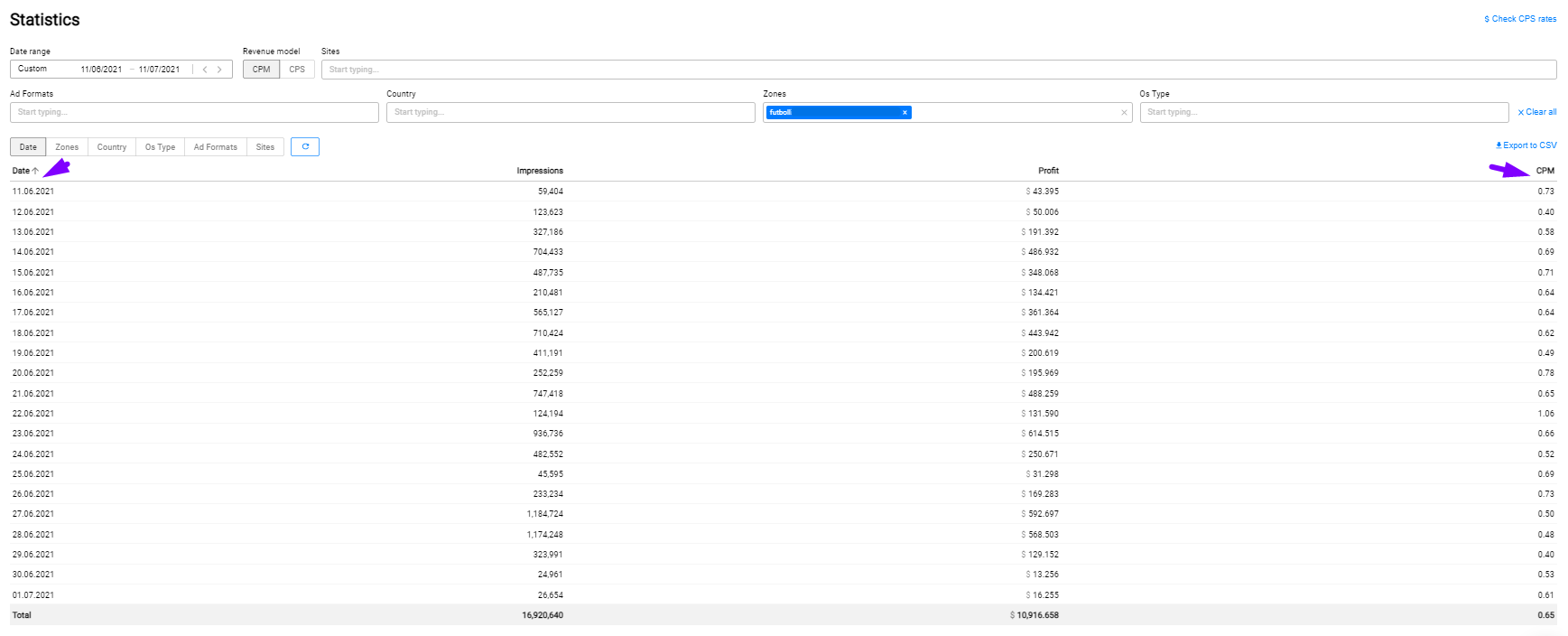
With a little foresight and strategy, you can make sure your site stays strong no matter the season!
9. You’re getting irrelevant or low-quality traffic
Here’s a marketing secret: if you want to get results, you have to know your audience. And if your website is attracting the wrong kind of traffic, your CPM rates will take a hit.
So, how can you tell if your traffic is relevant and high-quality or not?
The best way is to check your analytics tool for clues:
- Keep an eye out for a high bounce rate, which is a sign that your users aren’t finding what they’re looking for.
- Pay attention to the type of device your users are on – believe it or not, Android traffic typically drives a lower CPM than iOS. In fact, iOS traffic is some of the highest-paid-for traffic out there.
By understanding the quality of your traffic, you can take steps to optimize your site and boost your CPM rates – and that means happier users, happier advertisers, and happier you!
10. The geographic location of your traffic affects CPM
Just like relevancy and quality, the geographical location of your traffic impacts your CPM rates too.
If your traffic mostly comes from low-paying GEOs, you’ll get a lower CPM rate.
Similarly, if your traffic is coming from high-paying GEOs, you may get lower traffic volumes but higher CPMs.
The solution here is to monitor and test different GEOs in your campaigns.
Let’s take a look at one case from a publisher who did just that.
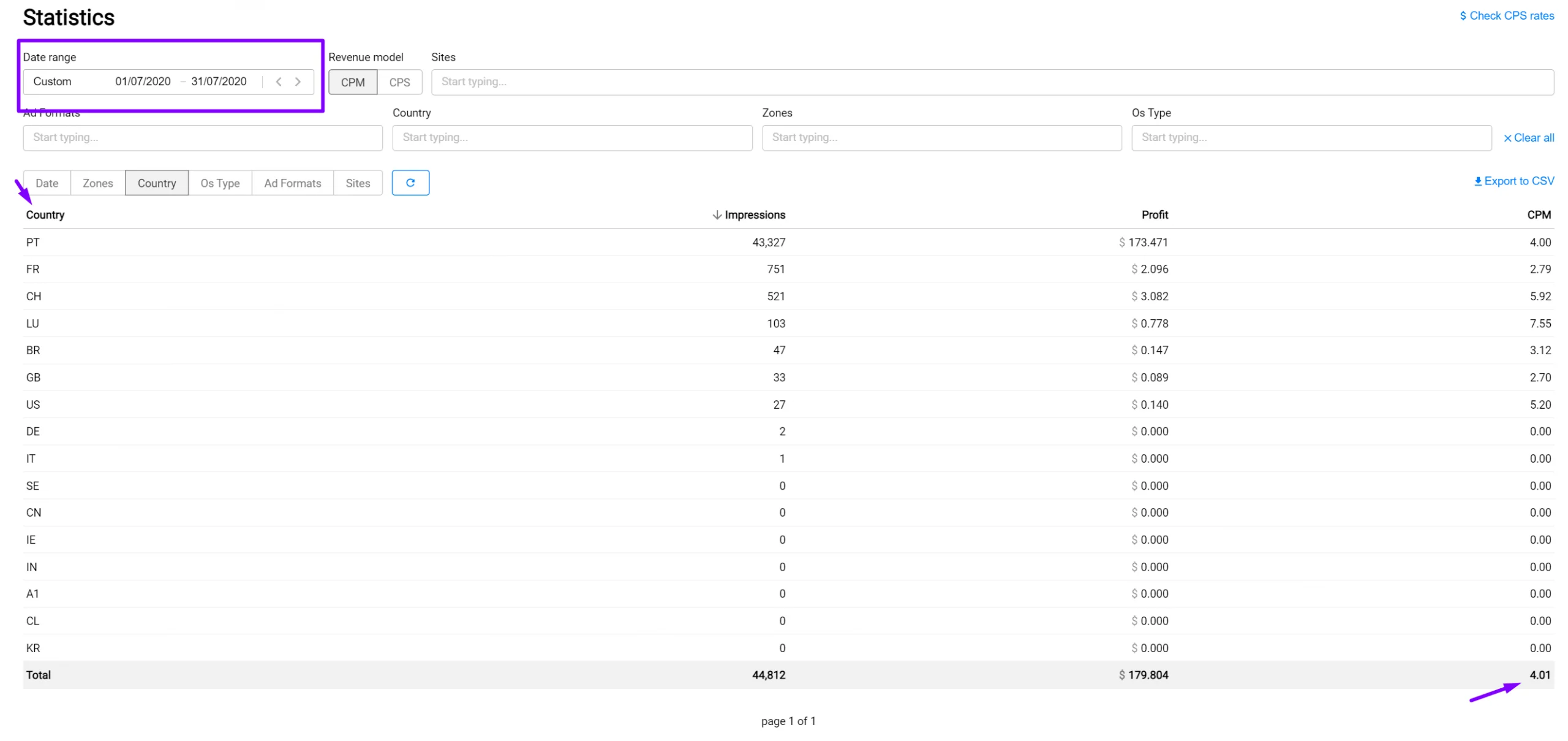

By changing the GEO traffic allocation, he increased his CPM by over 50% compared to the previous year, resulting in an increase from $4.01 CPM to $6.25.
Tip: Not sure how to set your traffic allocations? No problem. Monetag’s optimization system automatically assigns the most profitable ads based on your unique traffic type. And if you don’t see an improvement in your CPM after a few days, reach out to your Publisher Partnership Manager for help.
11. Advertisers are changing or cutting back on their campaign budgets
Let’s be real, change can be tough – especially when it comes to ad campaigns. Sometimes advertisers need to cut back or redirect their budgets, causing your CPM to fluctuate.
It can be a bummer to see your profits impacted by factors outside your control, but there’s always a solution.
Stay on top of industry trends, keep your traffic relevant and high-quality, and stay flexible – you’ll be able to bounce back in no time.
How should I monitor my CPM?
Now that you know the common reasons why your CPM may fluctuate, the next step is to monitor it.
The first thing you need to do is analyze your traffic using an analytics tool such as SEMRush, Ahrefs, or SimilarWeb to get a better understanding of your traffic quality. Once you’ve done that, you can then get a deeper understanding of your traffic by looking at your Monetag analytics.
In your Monetag analytics, you can filter your traffic by Ad Format, Country, Site Category, Zone, and OS type to see exactly where your CPM fluctuations are happening. This information is crucial in helping you take actions to either stop CPM drops or push to gain more from CPM increases.
By monitoring your CPM and analyzing your traffic sources, you can learn how to optimize your website for better performance.
Should I worry If I don’t get a high CPM?
As publishers, it’s normal to feel worried if your CPM isn’t as high as you’d like it to be.
But the good news is that you now have all the tools and knowledge to take control and fix any fluctuations.
By understanding the common reasons why your CPM may be dropping and implementing the solutions we’ve provided, you can optimize your site for success. So don’t worry if your overall CPM is low. Take a deep breath, identify the issue, and fix it.
MultiTag: A simple technique to boost your CPM rate
If you’ve tried everything to boost your CPM without success, then you may want to give our MultiTag a try.
MultiTag is one tag that you place in your website’s code that optimizes your ad delivery by displaying 5 different ad formats: Push Notifications, In-Page Push, Interstitials, OnClick Popunders, and Vignette Banners (Coming soon!).
Don’t worry, users won’t be bombarded with all these formats at the same time. MultiTag uses an algorithm to deliver the most profitable ad formats that are the most relevant to your audience. So, say goodbye to CPM fluctuations and hello to higher profits.
Wrapping it up: What’s a good CPM?
After everything we’ve learned about CPM and its fluctuations, you might be asking yourself what is a good CPM anyway?!
There’s no straight answer to this question. Whether your CPM is good or bad varies from site to site, and a number of factors like:
- GEOs
- Site niche/vertical
- Ad format and placement
- Ad frequency
- Traffic quality
To wrap up, the best way to know that you’ve got a good CPM is by continuously monitoring and analyzing your traffic to understand what works best for your site.
So, keep experimenting, keep optimizing, and keep pushing forward. With the right strategies in place, you can maximize your CPM and profits.
